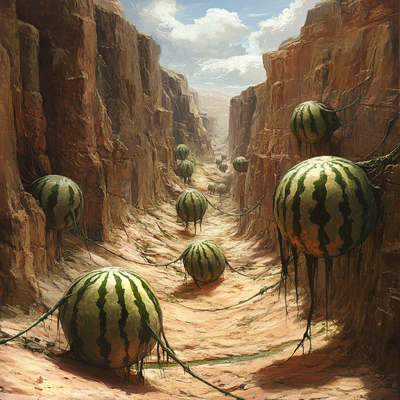Olm
The country of Olm occupies the eastern expanse of the Windy Isle, a vast and unique land defined by extremes of geography and climate. Its borders encompass a stark, ever-changing landscape shaped by the merciless rhythm of the winds and rains. Olm's geography is both its greatest bane and, occasionally, its savior.
Geography of Olm
Olm is an austere land, characterized primarily by its grassy deserts, which dominate the central plains during its infamous drought years. These harsh periods arise from relentless eastern winds that scour the terrain, stripping the soil of nutrients and exposing the land to an arid, sunbaked existence. Despite the apparent barrenness, tough native grasses cling to life, adapted to the harsh conditions.
In stark contrast, during boon years, when rains sweep in from the southern mountain ranges and the nutrient-laden sediments carried by the winds settle over the plains, Olm is transformed. These brief intervals of plenty make the country one of the most fertile lands in the region, with fields erupting in verdant abundance. Crops grow tall, and rivers, usually reduced to cracked beds, spring to life.
The southern border of Olm is graced by the Woka’s Fist, a massive lake nestled within the craggy peaks of the Pas Woka Mountain Range. This lake, named for its resemblance to a clenched hand pounding the earth, serves as Olm's primary water source. Its significance is both practical and symbolic: in times of drought, Woka’s Fist offers a lifeline, though it is never enough to sustain the entire country. Myths among Olm's people speak of Woka, a legendary figure whose rage created the winds and the mountains, and whose tears filled the lake.
The western border of Olm becomes a series of small plateaus, rising slowly over miles. They can range from spindly finger-like stone pillars to miles wide plateaus. These eventually all join into a cohesive land that becomes Lumban.
Towns & Cities of Olm
Gwil-nik Olmstead Kindley Grove
History and Resilience
The history of Olm is a tale of resilience and struggle. For centuries, its people have endured the cyclical nature of feast and famine. In drought years, Olm's population suffers immensely. Villages are abandoned as residents scatter in search of food and water. This grim migration often leads the Olmites to the borders of neighboring nations—Tarven, Lumban, and Charmac—where they are forced to beg for aid.
Relations with these countries are a delicate dance of dependence and resentment. During boon years, Olm can repay its debts with abundant harvests, but in drought years, the sight of desperate Olmites at the gates of foreign towns tests the patience of its neighbors. Political tensions occasionally flare, yet an unspoken agreement keeps the region from outright conflict: the cycle of drought and boon touches every country in some way, though none suffer as acutely as Olm.
Despite these hardships, the Olmites have cultivated a remarkable cultural identity. Their resilience is reflected in their traditions, from nomadic practices honed over centuries to epic ballads that celebrate survival and renewal. The people of Olm are experts in adapting to their harsh environment, constructing ingenious windbreaks and irrigation systems to conserve water during lean years. Their faith in the natural cycles of their land gives them hope that each drought will eventually pass, bringing another brief, life-giving bounty.
Peoples of Olm
Referring to themselves as Olmites, the majority of the people that call themselves residents live their lives, toiling the ground and managing the meager resources they get during the harsh years.
There are also a few nomadic tribes of Orcs, The Kovahda, that while not openly hostile, tend to roam away from villages and occasionally offer trade in specific open-air settings.
Olm is a land of extremes, its history etched into the windswept plains and fertile fields that define it. Its people, shaped by their environment, are a testament to human tenacity in the face of relentless hardship. Though the country endures a cyclical dance of starvation and plenty, it remains a cornerstone of the Windy Isle, bound to its neighbors by necessity and by the promise of the rains that will inevitably return.
